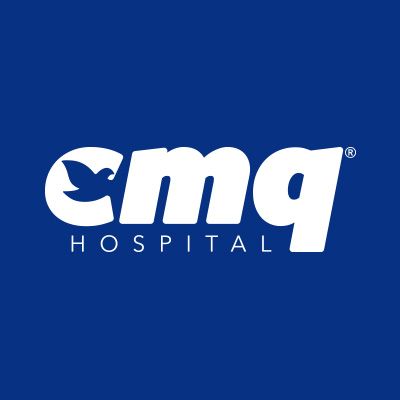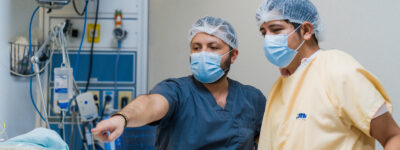A Milestone in Women’s Health: CMQ Hospital Brings Advanced Mammogram Screening to Riviera Nayarit
Detecting Breast Cancer Early and Saving Lives With Our Mammogram Screening Services
A breast mammogram screening test is an essential tool in the early detection of breast cancer. Therefore, at Hospital CMQ, taking care of your overall health is an integral part of our commitment to your well-being. Schedule your mammogram today and take an active step in safeguarding your breast health. We are here to take care of you at every stage of your journey to a healthy life. Keep reading and find out everything you need to know about mammogram screening in detail.
Nurturing Health, Nurturing Lives: Understanding a Diagnostic Mammogram in Detail
A mammogram is an X-ray test designed to detect possible signs of breast cancer in its early stages, when it is most treatable. For this purpose, this study uses very low-power X-rays to obtain detailed images of breast tissue. Thus, a mammogram allows physicians to identify any abnormalities, such as any masses or micro-calcifications. Moreover, according to the CDC, regular mammograms are the best tests doctors have to find breast cancer early.
The early detection of cancer through a mammogram significantly increases the chances of successful treatment and can make a difference in women’s health and quality of life.
Schedule your mammogram screening!
Send us a social media message or call 329 298 0717.
Benefits and Considerations of this Study
A mammography is a crucial tool in the early detection of breast cancer, and regular screening offers several significant benefits. However, like any medical procedure, there are also important considerations that women should keep in mind when undergoing a mammogram. Below, we will explore both the benefits and considerations associated with this test.
What are the Benefits and Advantages of a Mammogram?
- Early Detection of Breast Cancer: Breast screening is highly effective in detecting cancer tumors in the early stages, even before they can be felt. This significantly increases the chances of successful treatment.
- Reduced Mortality: Early detection through the use of mammogram screening has been shown to reduce the mortality rate from breast cancer.
- Monitoring Breast Tissue Changes: A mammogram is also used to track any changes in the breast tissue. This allows physicians to detect and address any abnormalities that may arise over time.
- Quick and Non-Invasive Procedure: Although it can be uncomfortable, mammogram screening is quick and non-invasive. We would like to emphasize that the benefits highly exceed any temporary discomfort.
Precision in Prevention: What Happens During a Mammogram?
A mammogram screening is quick and simple. Here’s what to expect during a mammogram and how to prepare for the procedure:
- Clothing: You will be given a hospital gown to wear before the test. It is recommended that you do not use any deodorant or creams in the underarm and breast area, as these products can interfere with the quality of the images.
- Medical History: Inform our technician of any symptoms, changes in your breasts, or family history of breast cancer. This will help personalize the procedure to your specific needs.
- Positioning: Our technicians will help you to correctly position yourself in front of the machine.
- Compression of the Breast: To obtain clear images, our physician will gently press your breast between two plates of the mammogram machine. This may be uncomfortable but is necessary to obtain detailed images.
- X-rays: At least two X-rays will be taken of each breast, one from above and one from the side. Accordingly, the technician can adjust the position and compression between takes. The test takes about 20 to 30 minutes.
- Results: After the images are taken, the radiologist will analyze the results. In some cases, additional images or follow-up tests may be needed.
What Happens After a Mammogram Study?
After the study, you can resume your normal activities. Fortunately, there are no special restrictions to follow after the procedure. Once your doctor receives your results, he or she will inform you of the findings. In addition, if any abnormalities are found, they will discuss the next steps, which may include further studies or medical examinations. Furthermore, depending on your medical history and results, your doctor may recommend scheduling your mammogram regularly for better control and follow-up of the results.
How Often Should You Get a Mammogram?
Recommendations on when and who should have a mammogram may vary depending on a woman’s health condition, age, and risk factors. However, as a general rule, our experts suggest that women should begin having annual mammograms starting at age 40. Likewise, if you have a family history of breast cancer or other risk factors, you may want to start getting mammograms earlier.
Breast Imaging Interpretation: Normal and Abnormal Results
Images obtained on a mammogram could indicate the presence of tumors, small calcifications, cancer, or other conditions. Generally, they are images with a black background, where the breast appears gray and white. Tissue that is denser, such as breast glands, appear white. On the other hand, less dense tissue, such as fat, appears gray. For this reason, a normal mammogram will be mostly gray, with some white areas showing dense tissue.

The American College of Radiology (ACR) has established a uniform way for radiologists to describe mammogram findings. The system, called BI-RADS, includes seven standardized categories, or levels. Each BI-RADS category has a follow-up plan associated with it to help radiologists and other physicians appropriately manage a patient’s care.
Breast Imaging Reporting on Database System (BI-RADS)
| Category | Assesment | Follow-up |
| 0 | Need additional imaging evaluation | Additional imaging needed before a category can be assigned |
| 1 | Negative | Continue regular screening mammograms |
| 2 | Benign (noncancerous) finding | Continue regular screening mammograms |
| 3 | Probably benign | Receive a 6-month follow-up mammograms |
| 4 | Suspicious abormality | May require biopsy |
| 5 | Highly suggestive of malignancy (cancer) | Requires biopsy |
| 6 | Known biopsy-proven malignancy (cancer) | Biopsy confirms presence of a cancer before treatment begins |
What Does Breast Cancer Look Like On A Mammogram?
Logically, any area that does not look like regular tissue may be a cause for concern. On a mammogram, a cancerous lump may appear as an irregular white mass with undefined borders. However, not all white masses on a mammogram are cancerous. Our experts say that most lumps found in the breast are not cancerous; they may be cysts or calcifications.

Meet Our Specialized Team in Breast Imaging
We have a team of radiologists with expertise in mammograms led by Dr. César Medina, who are committed to providing accurate diagnostic and individualized care.
Where To Get A Mammogram Near Me?
If you need a mammogram and you are in Puerto Vallarta or Bucerias, do not hesitate to contact our hospitals. We have three hospitals strategically located throughout the Banderas Bay region.
Our Locations
CT Scan Studies, Urgent care center open 24/7, and Walk-in clinic.
CT Scan and Open MRI Studies, ICU, Urgent care center open 24/7, and Walk-in clinic.
CT Scan Studies, 24/7 emergency medicine, On-site specialists, and Walk-in clinic.
Frequently Asked Questions about Mammogram Screening at Hospital CMQ
Mammograms may cause some discomfort, as the breast is compressed between two plates to obtain clear images. However, the compression is brief and necessary for accurate results. If you experience significant pain, inform the radiologist conducting the mammogram.
The frequency of mammograms depends on factors like age, personal health history, and family history. In general, women are advised to start regular mammograms around the age of 40 and continue annually.
To prepare for a mammogram, avoid using deodorant, lotions, or powders on the day of the exam, as they can interfere with the images
The cost of a mammogram can vary based on the clinic, healthcare provider, and insurance coverage. It’s recommended to check with your insurance provider and the healthcare facility for specific cost details.
Mammograms are typically recommended for women starting around the age of 40. However, specific recommendations may vary based on individual health factors and family history.
The mammography procedure is quick and usually takes about 20 minutes. However, the total time may vary depending on the preparation and whether additional images are needed.
In many cases, you don’t need a doctor’s note for a routine mammogram in Mexico. However, it’s advisable to check with the healthcare facility to confirm their specific requirements.





